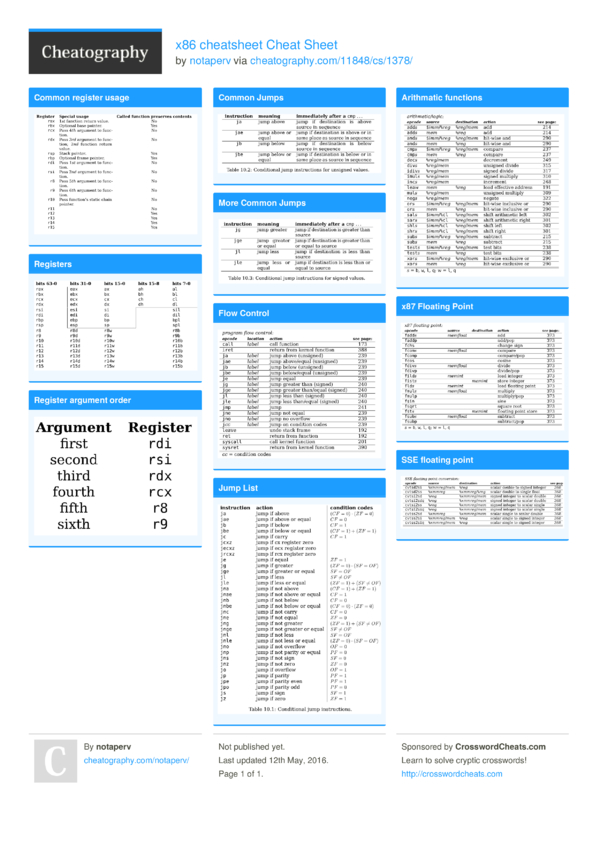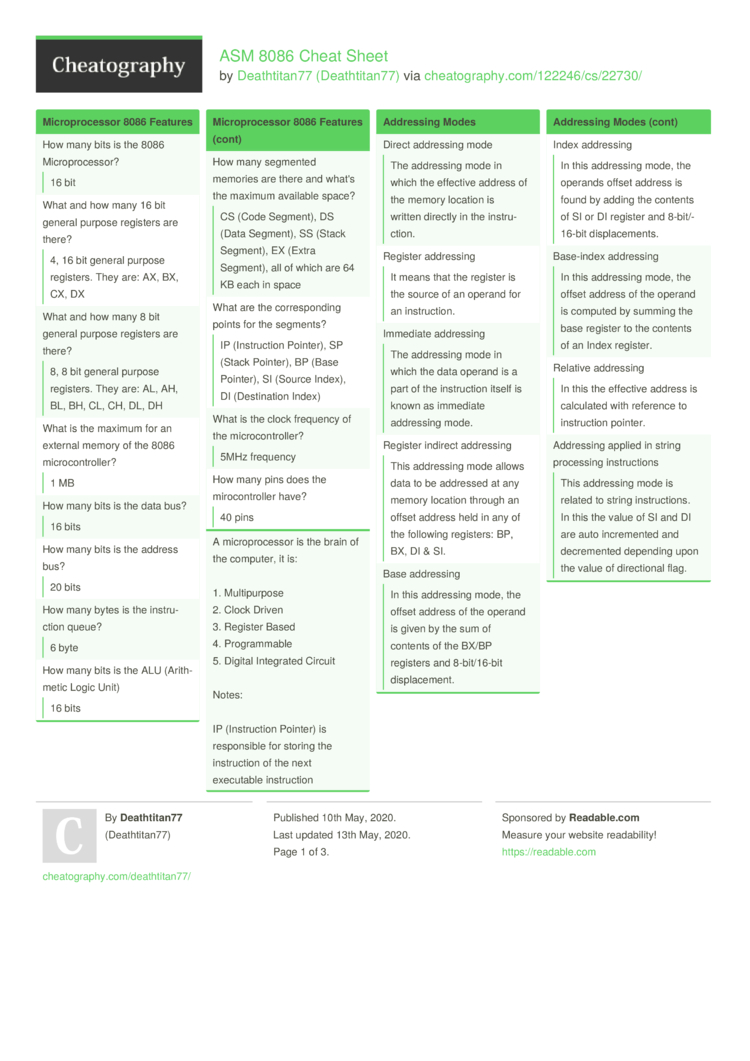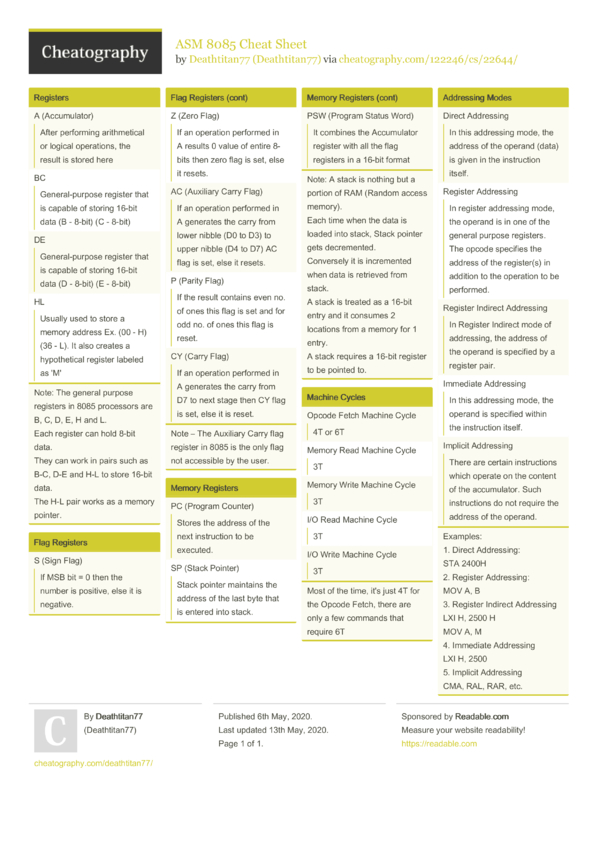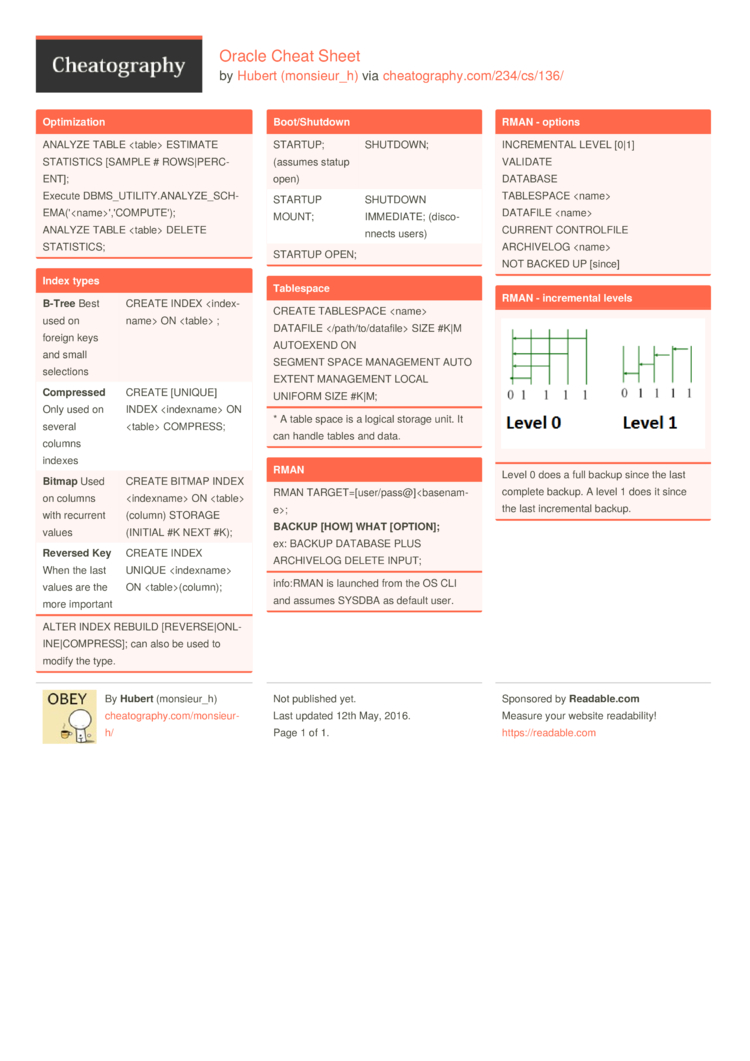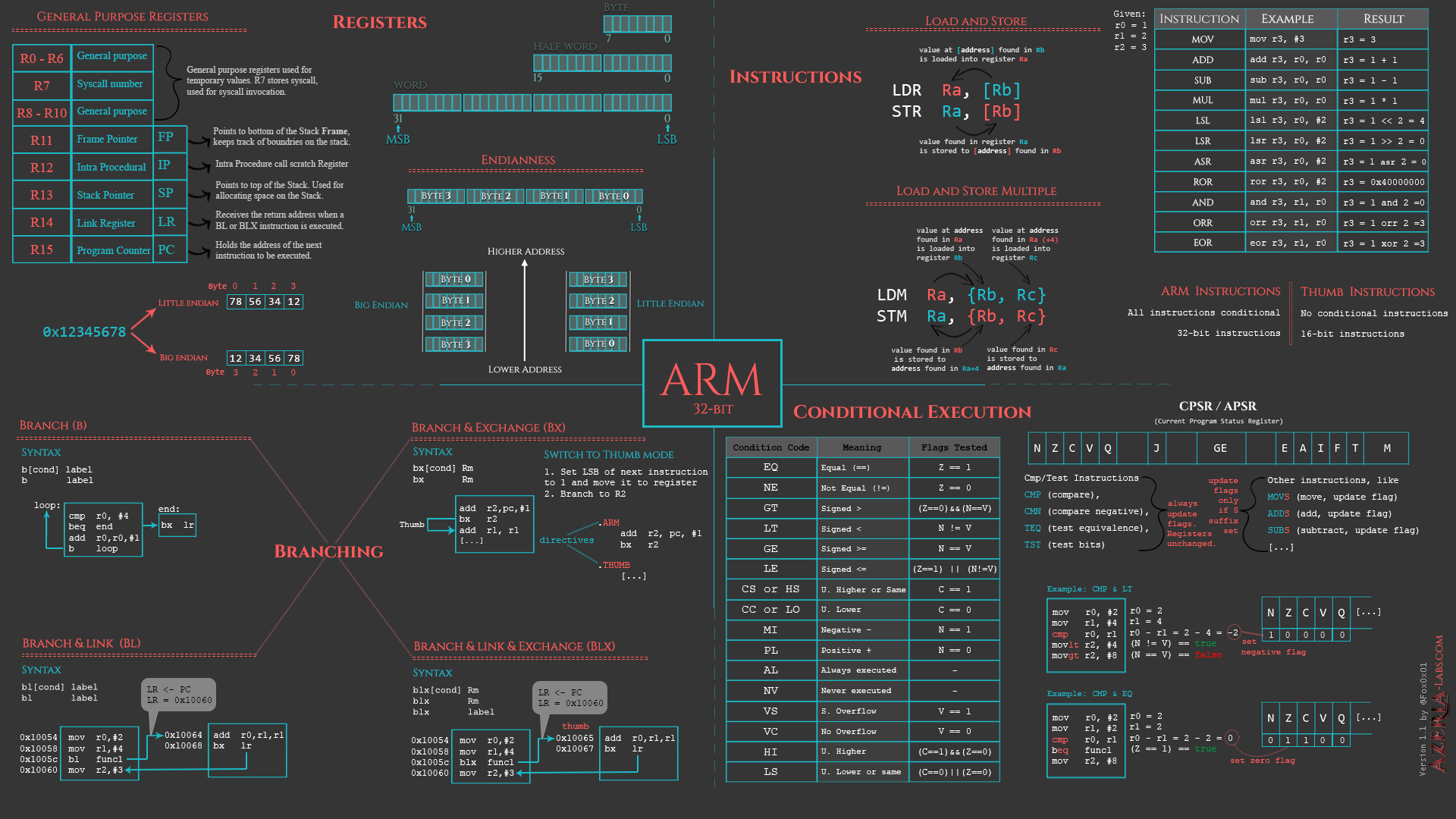Asm Cheat Sheet
Asm Cheat Sheet - For instance, if arr is an array of. To use system calls define on x64 systems, we need to use syscall instruction. To access a given array element, the index value is multiplied by the element size and added to the array pointer. Op1 = the operand, r = can be a register, m = can be a memory. Although the assembly code can write here, values written will be reflected in an output device or overwritten by an input device.
For instance, if arr is an array of. Although the assembly code can write here, values written will be reflected in an output device or overwritten by an input device. To access a given array element, the index value is multiplied by the element size and added to the array pointer. Op1 = the operand, r = can be a register, m = can be a memory. To use system calls define on x64 systems, we need to use syscall instruction.
Op1 = the operand, r = can be a register, m = can be a memory. Although the assembly code can write here, values written will be reflected in an output device or overwritten by an input device. To use system calls define on x64 systems, we need to use syscall instruction. To access a given array element, the index value is multiplied by the element size and added to the array pointer. For instance, if arr is an array of.
Assembly Language Cheat Sheet
For instance, if arr is an array of. To use system calls define on x64 systems, we need to use syscall instruction. To access a given array element, the index value is multiplied by the element size and added to the array pointer. Although the assembly code can write here, values written will be reflected in an output device or.
ASM 8086 Cheat Sheet by Mika56 (2 pages) programming assembly
To use system calls define on x64 systems, we need to use syscall instruction. For instance, if arr is an array of. To access a given array element, the index value is multiplied by the element size and added to the array pointer. Although the assembly code can write here, values written will be reflected in an output device or.
ASM 8086 Cheat Sheet by Deathtitan77 Download free from Cheatography
Op1 = the operand, r = can be a register, m = can be a memory. Although the assembly code can write here, values written will be reflected in an output device or overwritten by an input device. To access a given array element, the index value is multiplied by the element size and added to the array pointer. For.
ASM 8085 Cheat Sheet by Deathtitan77 Download free from Cheatography
Op1 = the operand, r = can be a register, m = can be a memory. To use system calls define on x64 systems, we need to use syscall instruction. Although the assembly code can write here, values written will be reflected in an output device or overwritten by an input device. To access a given array element, the index.
Oracle Commands Cheat Sheet
To access a given array element, the index value is multiplied by the element size and added to the array pointer. Although the assembly code can write here, values written will be reflected in an output device or overwritten by an input device. To use system calls define on x64 systems, we need to use syscall instruction. For instance, if.
(PDF) ASM Cheat Sheet DOKUMEN.TIPS
Op1 = the operand, r = can be a register, m = can be a memory. For instance, if arr is an array of. Although the assembly code can write here, values written will be reflected in an output device or overwritten by an input device. To use system calls define on x64 systems, we need to use syscall instruction..
Assembly Basics Cheatsheet Azeria Labs
Op1 = the operand, r = can be a register, m = can be a memory. Although the assembly code can write here, values written will be reflected in an output device or overwritten by an input device. To use system calls define on x64 systems, we need to use syscall instruction. For instance, if arr is an array of..
ASM 8086 Cheat Sheet by Mika56 (2 pages) programming assembly
To access a given array element, the index value is multiplied by the element size and added to the array pointer. For instance, if arr is an array of. To use system calls define on x64 systems, we need to use syscall instruction. Although the assembly code can write here, values written will be reflected in an output device or.
EssentialCheatSheet/SQLcheatsheet.pdf at master · asmshaikat
Although the assembly code can write here, values written will be reflected in an output device or overwritten by an input device. To use system calls define on x64 systems, we need to use syscall instruction. For instance, if arr is an array of. Op1 = the operand, r = can be a register, m = can be a memory..
Assembly Registers Cheat Sheet For X86 Cheat Sheet Assembly Language
Op1 = the operand, r = can be a register, m = can be a memory. For instance, if arr is an array of. To access a given array element, the index value is multiplied by the element size and added to the array pointer. To use system calls define on x64 systems, we need to use syscall instruction. Although.
To Use System Calls Define On X64 Systems, We Need To Use Syscall Instruction.
For instance, if arr is an array of. To access a given array element, the index value is multiplied by the element size and added to the array pointer. Op1 = the operand, r = can be a register, m = can be a memory. Although the assembly code can write here, values written will be reflected in an output device or overwritten by an input device.
